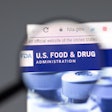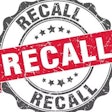Those who follow the animal drug industry are familiar with the developments with MUMS (Minor Use, Minor Species) regulation. Clearly, the law is not intended to apply to dog and cat food products. However, there may be aspects of the MUMS Act that, with a little regulatory creativity, can be put to use to address a pressing petfood issue: namely, the use of novel ingredients.
Provisions of the Act
The new law is designed to remedy the fact that the New Animal Drug Application (NADA) process is too burdensome when used for products intended for minor species (all non-human animals other than dogs, cats, horses, cattle, swine, chickens and turkeys) or for minor uses (i.e., when the disease or condition occurs only rarely in a population of a major species).
Several different provisions in the MUMS Act help alleviate the shortage of available drugs. One is "Conditional Approval," permitting the sponsor to market the product for up to five years before efficacy data must be submitted. The company must demonstrate safety and other NADA requirements before the product is marketed. Still, this would allow the firm time to recoup some of its R&D expenditures prior to full approval. Another avenue open to MUMS drugs is "Designation." Manufacturers of designated drugs would receive incentives to seek approval such as monetary grants, tax breaks and marketing exclusivity, once approved.
The provision in the Act that grabbed my attention is "Indexing." For a product to be included in the Index, the company would convene a panel of experts to review available safety and efficacy information on the drug. Unlike a NADA, anecdotal information and personal experience of the experts would be considered in the panel's deliberation. Assuming FDA agreed, the drug would obtain the status of a "Legally-Marketed Unapproved Animal Drug." While the possibility remained of removal from the Index if safety or other problems arose, it would still be a more secure status than "regulatory discretion."
Application for petfoods?
What does this mean for petfood? Not much. Dogs and cats aren't minor species, and I doubt that the feeding of pets constitutes a "minor use" of a product. Still, I wonder why an equivalent solution can't be crafted. If there can be "Legally-Marketed Unapproved Animal Drugs," why not "Legally-Marketed Unapproved Animal Food Additives"?
As with MUMS drugs, the major problem with getting novel ingredients approved for use in petfoods is economic. It's just impractical to expect an individual petfood company to expend the resources to go through the Food Additive Petition process. Also, many ingredient suppliers aren't willing to go through the additional expense of food additive approval for the much smaller potential petfood market, especially since, unlike drugs, approval of a new food additive does not convey any marketing exclusivity rights. The result is that fewer novel ingredients make it into the petfood marketplace. I think this hinders advancement in our knowledge and application of pet nutrition, adversely affecting animal health in the long run.
Clearly, a less burdensome method for petfood manufacturers to gain regulatory acceptance for use of novel ingredients is warranted. AAFCO's Feed Ingredient Definition process historically was a swifter, less burdensome means of receiving sanction. As it is used now, it is my impression that except for aspects such as the lack of need for an environmental impact assessment, it has evolved to where it often can be just as onerous and lengthy as the formal food additive approval process.
Solutions?
Over the years, AAFCO and FDA have pondered approval processes for novel ingredients requiring a lower standard for demonstration of safety and utility, but none of them panned out. However, a system utilizing expert panels to assess safety and utility of substances to be included in an "Index" may be a viable solution to this dilemma.
It wouldn't be easy implementing this plan. It might even require new federal legislation. However, I think it would be better than amending DSHEA to include products intended for animal consumption, which, in my opinion, would offer insufficient assurances of safety. It is also my opinion that it would be much, much better than the current tack that regulators appear to be taking.
As I understand it, steps are being taken so that products containing novel ingredients would be labeled and regulated as drugs, not foods. The pros and cons of such an approach may be discussed in future months. In the interim, I think that such a scheme is NOT in the best interest of regulators, the industry or, most importantly, the consumer.















